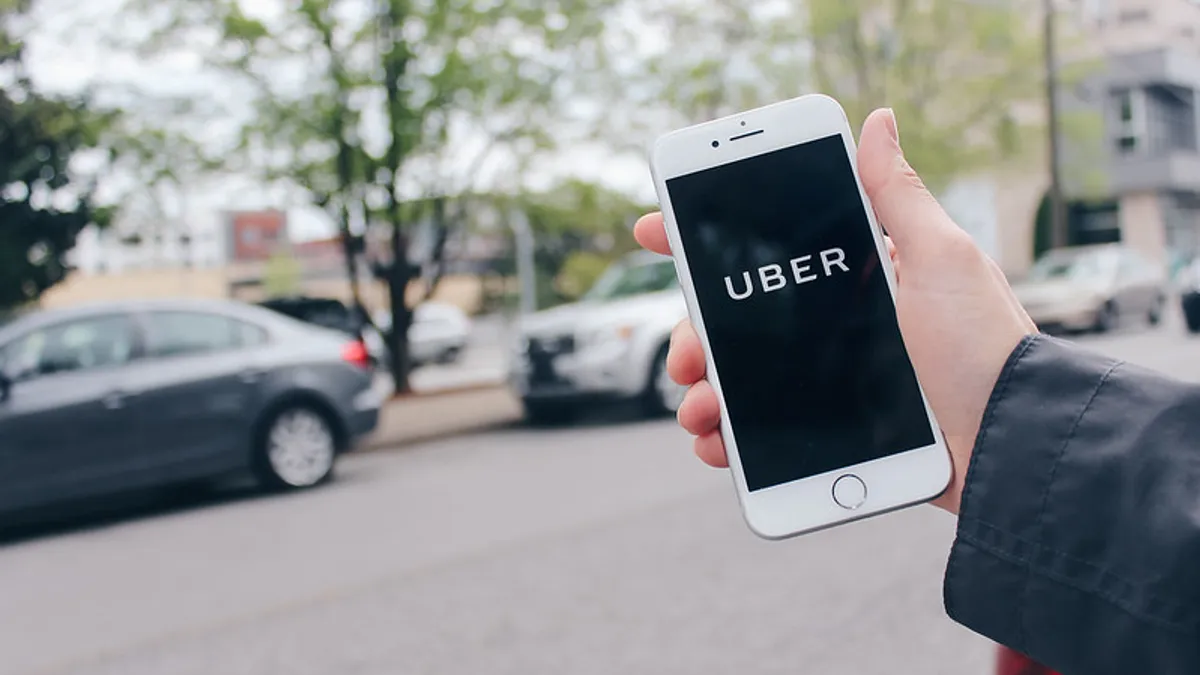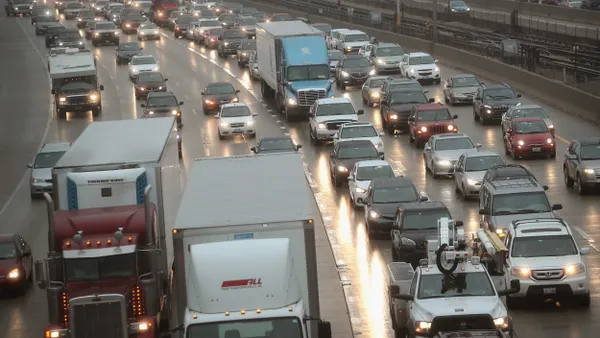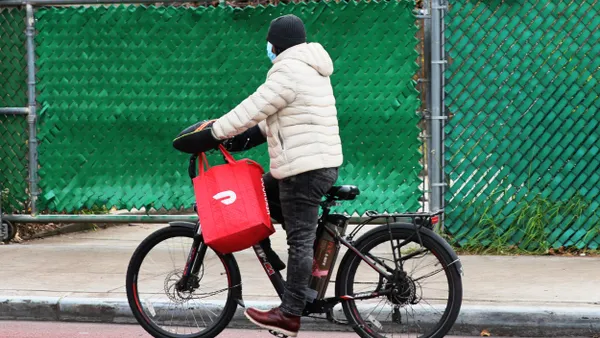Dive Brief:
- In a Transit Horizons thought paper published on Tuesday, Uber Transit proposed the foundation of a "new model of public transportation" to evolve in U.S. cities over the coming decade: one that replaces what it calls "siloed" public transit systems with integrated, technology-driven multi-modal networks run by transit agencies.
- Uber Transit predicts that by 2030, public transit agencies will operate more as mobility management agencies to orchestrate transportation networks with a wide array of modes, such as ride-sharing, microtransit and micromobility, that can support and subsidize existing services. Uber says this would increase transportation access and flexibility, while digitization of services would allow for the increased use of Mobility-as-a-Service (MaaS) apps to plan and pay for rides.
- This network approach would unlock variable cost supply to increase agency resiliency amid service disruptions and ridership drops, as seen during the COVID-19 pandemic, Uber Transit said. The paper recommends agency-subsidized ride-sharing programs to complement public transportation in a bid to lower operating cost and increase service access.
Dive Insight:
Calls for innovation and service improvements across public transportation systems are more pressing than ever as agencies work to regain decimated transit ridership in the wake of COVID-19. The pandemic has highlighted "deep-seated changes" in the way people are getting around cities, said Chris Pangilinan, senior policy manager at Uber Transit, requiring agencies to adapt to new environments while pushing for a rapid recovery.
"Historically, most transit agencies operate their services in isolation ... and as a result, many view themselves as specialized transport operators with a hard-coded skill set," Pangilinan said. "And while this might have been status quo, we think we're at an inflection point here where agencies are recognizing that added sophistication and skills are increasingly necessary to respond to communities' shifting needs."
And as local governments patch their revenue streams, the paper argues there's an economic case to be made for adding ride-sharing services to the public transportation mix. Agencies today depend on a fixed cost structure across their modes, which can represent an estimated 80%-85% of an agency's operating budget, the paper found. Uber Transit suggests that up to 6% of U.S. bus trips could be replaced by ride-sharing at a cost reduction for agencies.
Uber's Transit Horizons paper was developed with software provider Routematch, which was acquired by Uber in July 2020 to expand its influence in the Software-as-a-Service (SaaS) market. The acquisition came shortly after Uber's first SaaS partnership in Marin County, CA.
In fact, Uber has been knocking on the doors of public transit agencies since 2015, when the company entered its first transit partnership with Gainesville, FL. In the years passed, Uber Transit launched an in-app ticketing feature starting with Denver's Regional Transportation District; rolled out real-time train schedules and information; brought free UberPool trips to public transit riders in Dallas; and even committed to 100% "green" rides by 2040 with the help of public transit partnerships.
Starting next week, Uber Transit will launch a subsidized, on-demand paratransit service with the Charleston Area Regional Transportation Authority (CARTA) in South Carolina, as well as a partnership with Grand Valley Transit in Colorado, Uber Transit confirmed. It will also enter a first/last-mile partnership with Nashville, TN's public transit agency WeGo, and with the Cecil Country Transit Authority in Maryland, in the weeks to come.
Despite Uber Transit's optimism on the future of public transportation, there are some holes to be poked in its plan. First, the environmental implications of such a mixed-modal network would need to be considered, as replacing bus trips with ride-hailing could contribute to congestion. A February 2020 study found that ride-hailing services like Uber and Lyft contribute to almost 70% more emissions than the transportation mode they replace.
Furthermore, there are data-sharing complications and business interests to consider, wrote urban policy writer David Zipper in a piece for Bloomberg CityLab. "I don't want to imply that Uber's interests are always opposed to transit. .... But Uber is a public company (whose stock recently hit an all-time high), responsible to shareholders whose motivations differ from public transportation executives," Zipper wrote.
For ride-sharing and emerging transportation modes to really infiltrate public transit systems, agencies will need to welcome partnerships from private sector firms outside of Uber. "I think ultimately this is a competitive environment" in which a variety of products and services can give agencies and riders more choice in how they integrate their systems, said Ivan Mihov, head of strategy and planning at Uber Transit.












